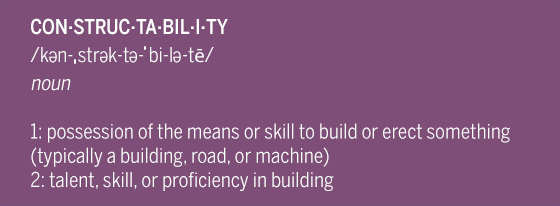Infrastructure Week: Constructability

Today, a modern metropolis cannot live and sustainably grow without safe and fast transit infrastructure networks. In fact, no modern-day city could have evolved into what it is today without the most efficient transportation mode to move people: trains.
The Number 7 Subway Line Extension to the Far West Side of Manhattan is a great example of how adding a train connection can “disrupt” and transform a once underutilized and detached neighborhood, turning it into the fastest growing part of the City, spurring the development of new commercial and residential construction. The redevelopment of the Hudson Yards District – until recently the last under-developed, large-scale part of Manhattan suitable for high rise urban redevelopment – would not be possible without connecting to New York City’s subway system.
Large-scale transportation and infrastructure projects transform civic space and urban environments and require creativity, sensitivity, and collaboration. As the lead architect on the WSP team, Dattner Architects designed 34th St Hudson Yards Station and five Systems Buildings along the subway extension. As the first new subway station built in New York City in over 50 years, our design team reflected at length on the question: How should a modern subway station and its supporting buildings be planned, designed, and implemented to integrate successfully into the City of today? And what we discovered was how to define constructability for these vital projects…
Safety. The 34th Street Hudson Yards Station is approximately 125-foot of depth – one of the deepest in the NYCT’s subway system – 34th Street Hudson Yards Station addresses strict passenger safety and comfort requirements. In order to meet the NFPA-130 requirements regarding smoke control and two-minute station evacuation time, the Station is supported by two Systems Buildings located at each end of the Station, each housing four, three-story high fans. These 400hp fans are part of the large push-and-pull ventilation system which – in case of fire – will push fresh air into the Station through the shafts of the Systems Building located near one end of the Station and remove the smoke (pull) through the shafts of the Systems Building located at the other end of the Station.
Sensitivity and Future Planning. Due to the size of the fans and other mechanical and electrical equipment required to run the subway trains, the Station, Station Entrance, and the supporting Systems Buildings are relatively large structures that take a lot of space. As the land in Manhattan is expensive and limited, the Station was designed to allow for integration and overbuild. While the Station and vast majority of the connecting tunnels are located deep underground, the Station Entrance is integrated with the Hudson Yards Boulevard Park and the Systems Buildings will be fully overbuilt and integrated into the Developer’s Towers and eventually disappear from the City’s streetscape.
Collaboration. This complex planning and design approach required a commitment to coordination among architects and engineers and with MTA Capital Construction, New York City Transit, various State and City’s agencies, the Developers, and Contractors. The Site J Systems Building located at North side of 33rd Street, which for a short period of time was a free-standing building, has already became an integral part of the 55 Hudson Yards Tower form. The building was designed to receive structural load of the future 55 Hudson Yards Tower. The tunnels that house escalators and Inclined Elevators and connect the 34th Street Hudson Yards Station Upper Mezzanine with the Lower Mezzanine were appropriately spaced to allow for the Tower’s caissons foundation. The building was set back from the property line just enough to allow for future recladding of the façade that is successfully happening right now.
Grounded by Safety, Sensitivity and Future Planning, and Collaboration, objectives vital to the project’s constructability, this new station is one to be proud of and an important beginning for one of Manhattan’s newest neighborhoods… “This beautiful new station is just the beginning of the enhanced service the hundreds of thousands of customers on the 7 Line will see in the future,” James L. Ferrara, Interim President of MTA NYCT.
